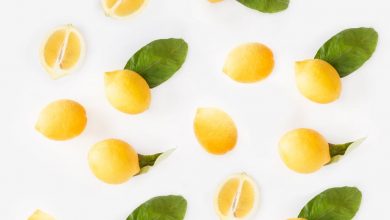
Butylated Hydroxyanisole and Its Effect on Health and Fitness
Pick up a pack of breakfast cereals, cookies, chips, or even a bottle of vegetable oil, and you will most certainly find antioxidants butylated hydroxyanisole (BHA) and butylated hydroxytoluene (BHT) listed in the ingredient list. BHA has been used in food products since 1947 to prevent rancidity and keep them fresh for a long duration. The grocery store or the supermarket that you visit every week is filled with processed foods, all of which contain some sort of preservatives or additives meant to boost the taste and raise the shelf life of the food item. Among the many additives used in these popular stored packaged foods, BHA is one of the many additives that will be listed on the package label.
What is Butylated Hydroxyanisole?
Butylated hydroxyanisole, the chemical formula of which is C11H16O2, is a white or pale yellow synthetic waxy solid antioxidant prepared in laboratories. BHA, along with its near cousin BHT, among other additives, is commonly used in processed food items and personal care items to preserve the oils and fats and prevent them from becoming rancid.
Chemistry of BHA Food Preservatives
Both butylated hydroxyanisole and its cousin butylated hydroxytoluene are phenolic compounds added to food to preserve its freshness.
BHA is a combined mixture of the isomers 3-tert-butyl-4-hydroxyanisole and 2-tert-butyl-4-hydroxyanisole. It is also referred to as BOA, tert-butyl-4-hydroxyanisole, (1,1-dimethylethyl)-4-methoxyphenol, tert-butyl-4-methoxyphenol, antioxyne B.
The molecular formula of BHA IS C11H16O2 . It is a white or pale yellow waxy solid with a faint pleasant aroma.
Difference Between BHA and BHT
Both BHA and BHT are antioxidant compounds that help stop oxygen from reacting with substances and converting them into other materials. In short, it helps avoid fat and oil oxidization that would otherwise change them into harmful and smelly products.
Both the two compounds belong to the phenol family of organic compounds. The phenols comprise of a benzene ring of six carbon atoms with at least one hydroxyl (-OH) group attached. While BHT is a white or pale yellow solid, BHT is a crystalline white solid.

Why is Butylated Hydroxyanisole Used in Foods?
BHA has antioxidant properties which food manufacturers use for processed foods, like dry foods and breakfast cereals, to help the fats stay fresh for a long period. It prevents oil oxidation, which is what affects the color, taste, and odor of the food items. Oxidation also takes off some of the essential nutrients from the food. BHA, as well as BHT, has a few antimicrobial properties that can save other compounds from the harmful and damaging results of oxygen exposure. They are like vitamin E, which is also an antioxidant used as a preservative in foods.
All processed foods are packed stored in air-proof containers that are filled with a harmless gas called nitrogen. However, the food is exposed to oxygen in the air once it is open. While humans and animals require oxygen to breathe and survive, exposing processed food to oxygen makes it rancid as it reacts with fats. Food items containing rancid fats spoil its flavor, and it is surely something you will not want to have often.
While some of the packaged foods that are open are consumed within a few days, a box of cereal, for instance, will take time to finish. If the box of cereals without additives and preservatives remains open for a month or even a few weeks, it is sure to spoil.
Food additives help lengthen the shelf life of processed food items and also improve their taste. That certainly does not make the food good to consume, as more and more people have begun to question the safety of these additives. There is ample evidence conducted on animals to suggest their harmful effects if used for a prolonged period.
Antioxidants and Its Effects
Antioxidants are extremely essential for our good health and are present in many foods. Antioxidants are present in plenty in vitamin C and found in vegetables and fruits, whereas vitamin E is available in nuts and seeds.
Food manufacturers have to use preservatives and additives in packaged products, such as cereals, chips, cheese, milk, and many other food items mentioned earlier. The additives are added to raise the shelf life of the food items and prevent them from getting rancid.
Most of the antioxidants used in foods are manufactured synthetically. There would not have been any need to add antioxidants if we purchased fresh food in its real, natural state. However, today, all the foods that we get in the supermarket and grocery shop are treated with some sort of additives.
Antioxidants that are used today as food additives are of six groups: BHA, BHT, TBHQ, Erythorbic Acid, Gallates, Ascorbic Acid, Hexylresorcinol, and Tocopherols.
Synthetic antioxidants cause grave health problems. Among them, the most problematic ones are BHA, gallates, BHT, and TBHQ.
BHA, BHT, and TBHQ
BHA and BHT have been used in food since 1950, however, with some restrictions. TBHQ is a recent addition when it comes to the list of antioxidants used in foods. It was only in 2004 that TBHQ came to be accepted and used as an antioxidant in foods.
BHA, BHT, and TBHQ are artificial antioxidants. Since they are prepared in laboratories, there is nothing natural about them. Though the use of BHT in foods has reduced over time, the use of BHA has increased over the years. BHA is more stable at a higher pressure and temperature, and hence its use is on the rise.
While the use of TBHQ is also rising, it is still BHA that is widely used in processed and packaged foods today. Most countries allow the use of these additives at the prescribed and recommended dosage. Since these additives are used across the world in foods, it is difficult to estimate if any company exceeds the recommended dosage of BHA and other common additives in their foods. It is the children who are at the greatest risk due to their liking for packaged snacks and food items. .
Foods Containing BHA
BHA is present in most packaged foods, and that comprises of breakfast cereals, hot dogs, processed meats, potato chips, dehydrated potato items, chewing gum, vegetable oils, butter, cheese, beer, and even animal feed.
Some of the other foods that contain BHT include:
- Beverages
- Ice cream
- Commercially prepared bread
- Candy
- Baked food products
- Edible oils and fats
- Packed cake mix
- Packaged snacks
- Mashed potatoes (Dehydrated)
- Frozen sausages
- Enriched rice (enriched)
- Jello
- Lard
- Salted peanuts
- Canned foods
- Wine
BHA is also used in food packaging.
Non-Food Uses of BHA
BHA is used not just in foods, but also in cosmetics, like skin creams, lipsticks, moisturizers, deodorants, shampoos, and makeup, among others. The compound can also be found in medicines, such as lovastatin, simvastatin, and isotretinoin.
Apart from the products listed above, BHA is also commonly found in the following items:
- Antifungal powder
- Dietary supplements
- Embalming fluid
- Paints
- Electrical transformer oils
- Ground vehicle and aviation fuels
- Lubricating, turbine, and insulation oils
- Lacquers
- Elastomers and Plastics
- Nicotine patches
- Paperboard
- Petroleum products
- Polyethylene food wraps
- Polyethylene
- Rubber
- Resins
- Synthetic and natural rubbers
- Varnishes
- Waxes
- Waxed paper

BHA Safety Assessment: Facts and Concerns
BHA, like BHT, can cause a lot of damage to your body, as it not only upsets your endocrine system, but is also said to possess cancer-causing compounds.
The amount of BHA used by food manufacturers in their packaged and processed foods, as per researchers and scientists, meets the recommended dosage and hence need not be stopped. Scientists say that the food becomes toxic only if the BHA consumption is at least 125 times the usual amount daily.
Further, according to the United States Food and Drug Administration (FDA), both BHA and BHT are safe to consume, and hence, they have listed them in the category of GRAS (generally regarded as safe) food.
Even though researchers and the FDA have given their approval for a specific dosage to be allowed in foods, evidence from the National Toxicology Program reveals that BHA is a likely carcinogen. Yet, there are researchers who claim that the compound is actually an anticarcinogen. Whether toxic or not, the Center for Science in the Public Interest has given BHA its “must avoid” label, whereas its counterpart BHT has been given a “caution” label.
Here are some more facts and concerns surrounding BHA.
BHA Classified as an Endocrine Disruptor
BHA, as per the European Union, is an endocrine disruptor, which at higher dosage, can reduce testosterone and the thyroid hormone thyroxine and also negatively affect the quality of the sperm and sex organs among rats (Jeong 2005).
Another study (Kang 2005; Zhu 1997) showed how female rodents that have been given lower doses of BHA had a reduction in the weight of their uterine due to the effects on estrogen metabolism.
More studies (EFSA 2011a; Vorhees 1981a) revealed developmental effects like increased mortality and high mortality in rodents that had not been weaned. They also showed behavioral effects after weaning.
BHA as a Carcinogen
BHA and BHT are associated with health problems, and that includes hormone system disruption, cancer, autoimmunity, damage to liver and kidney, and thyroid problems. Butylated hydroxyanisole is regarded as a carcinogen due to the evidence of its negative effect on experimental animals. Too much of BHA consumption is also associated with headaches, exhaustion, rashes, and hives.
BHA vs. BHT
A study was conducted on healthy and mature male and female rodents in a 1:1 ratio. The in vitro estimations of the percentage hemolysis revealed that BHT is more toxic in comparison to BHA. The hemolysis was 50 percent, revealing a toxicity level of 50 percent. Similarly, the kinetics or the hemolytic activities revealed a rise at 60-65 percent only 12 minutes after consuming BHT and 50 percent 20 minutes of consuming BHA. The research clearly shows the harmful effects of BHA and BHT to the blood at 0.75% concentration. More studies are underway to understand the dietary effect of BHA on blood.
Even though BHA and BHT are said to be metabolized in the liver, which later gets thrown out through urine, they still might be hazardous to our circulatory system.
Environmental Hazard
BHA has also been listed under the Convention for the Protection of the Marine Environment of the North-East Atlantic as a chemical that we need to be concerned about due to its ability to bioaccumulate and its toxicity levels that might affect aquatic organisms.
Toxicology of BHA and BHT in Comparison with Vitamin E
BHA and BHT are known to cause blood clotting in animals if consumed in large dosages. However, when it comes to lung toxicity, it is only BHT that has shown detrimental effects.
The other toxic effects of BHA, as well as BHT, are seen only after extremely high intake of the chemical. A high dosage of BHA among animals causes tumors in their forestomach. Since there is no sign of genotoxicity of BHA and BHT, all published studies state that both these compounds promote tumors.
Vitamin E, on the contrary, is not found to have any carcinogenic properties. BHA, like BHT, must not be consumed in large quantities as they are reported to have carcinogenic effects. As of now, researchers and scientists through years of study have come to the conclusion that the concentrations of BHA and BHT used in foods these days are most probably harmless. Vitamin E, which can also be used as a preservative, can be used in high doses without any adverse effects.

How to Avoid Foods with Additives and BHA
Even though it is not possible to avoid consuming foods with BHA additive altogether, it is possible to reduce its intake. Fewer intakes of preservative foods are a good idea, as it is said to cause serious health problems. Remove processed and preservative foods from your diet and replace them with fresh fruits, lean meats, low-fat dairy products, fresh vegetables, and fruit juice.
Consume Fresh Fruits and Vegetables
Fresh fruits and vegetables do not usually contain additives and preservatives. It is hence a good idea to stock up on these foods, as they are rich in vitamins, minerals, and essential nutrients. They also aid in weight loss, as they are high in fiber and leave you feeling full for a longer duration. Be careful and avoid pre-cut and pre-washed vegetables and fruits, as they might contain some preservatives to maintain color and freshness.
Have Fresh Nuts and Seeds
Nuts like almonds, cashews, walnuts and Brazil nuts have high nutrition value, thereby keeping you strong and healthy. Raw seeds like pumpkin seeds, flax, sesame seeds, and sunflower seeds are extremely beneficial to the health. However, avoid buying salted or roasted nuts and seeds, as they could include colors and additives.
Avoid Processed Meat and Fish
Avoid purchasing processed fish and meat, as they most certainly will contain preservatives and harmful additives to keep them seeming fresh for longer. You can also look for organic meat and fish to avoid consuming additives. Further, processed deli meats will in most likelihood include preservatives and colors.
Have Organic Eggs and Dairy Products
High-quality and organic milk items, like cheese, yogurt, cottage cheese, and eggs, will not have preservatives. However, you must read the ingredient list on the label to make sure they do not contain any additives.
Eat Grains
You can eat grains such as rice, quinoa, and oats, as they do not contain artificial colors and additives if you buy the whole ingredients and prepare them at home.
Avoid Processed Foods When You Dine Out
When you dine out, you are most likely to come across processed foods and those that are high in additives. Be selective and choose carefully the foods and restaurants that you eat to avoid consumption of preservative foods.
Restaurants these days tend to advertise that they use preservative-free ingredients to prepare the food. Many restaurants use organic meat without adding hormones.
Keep Away from Eating Heavily Processed Foods
Nearly almost all processed foods contain additives. Even though you cannot avoid these foods altogether, you can reduce the intake of processed foods that you consume each day.
All foods that are likely to spoil fast and foods that are packaged minimally possess additives. It is hence a good idea to purchase unprocessed and fresh foods so that you can save the time that you have to spend reading the ingredient list.
If you have to eat processed foods with preservatives, see if they use natural preservatives like vinegar, salt, citric or ascorbic acid, and sugar.
Cook at Home and Make Items from Scratch
There is no doubt that cooking food at home is very time-consuming. However, it is much healthier than processed foods. It is a good idea to prepare food in advance and store it in a refrigerator to be used at a later date.
Preparing food at home enables you to control and decide what you must add and what you need not. You can thus control the fat, salt, sugar, and calories in your food.
If you have been eating highly processed food with a lot of additives for an extended duration, you must be slow in switching to home-made food free of additives, as quick change is not sustainable in the long term.
Foods that you can prepare without any added preservatives include salad dressings, marinades, sauces, and much more.
Read Labels Carefully
If you are very concerned about the harmful effects of BHA and other additives, you must get into the habit of reading the food labels to see if they contain any additives.
The label will have the list of ingredients, and you can carefully go through it to see if they contain BHA and other harmful ingredients. Boiling potatoes to prepare mashed potatoes is far better than buying a box of mashed potato flakes that will invariably contain BHA.
Buy Organic Cereals
It is recommended that you buy completely organic cereals instead of packaged ones that are most often sold in supermarkets. Organic cereals will not contain additives. However, you must be careful of foods that have ‘made with’ or ‘contains’ organic items written on the package.
Bottom Line
If you can, it is better to use and consume foods that do not have additives like BHA and BHT. It is of course highly impossible to avoid foods with preservatives completely since it is challenging to find foods without any common additives. All processed foods in the market have some sort of preservatives or the other that might not be too healthy for your body. Some additives are essential to ensure that packaged foods do not decay or become rancid or toxic over time. You must realize when the nutritional value of the preserved foods outweighs the risks of the additives. Research on the effects of butylated hydroxyanisole on our body and health is still in the initial stages, and hence, we do not have enough evidence to prove its negative effect on us. Based on the various researches and studies conducted on animals, it is recommended that we avoid or reduce the consumption of preservative foods that have BHA and other additives when possible. You must deliberately look for packaged items that use no preservatives or use additives like vitamin E.



